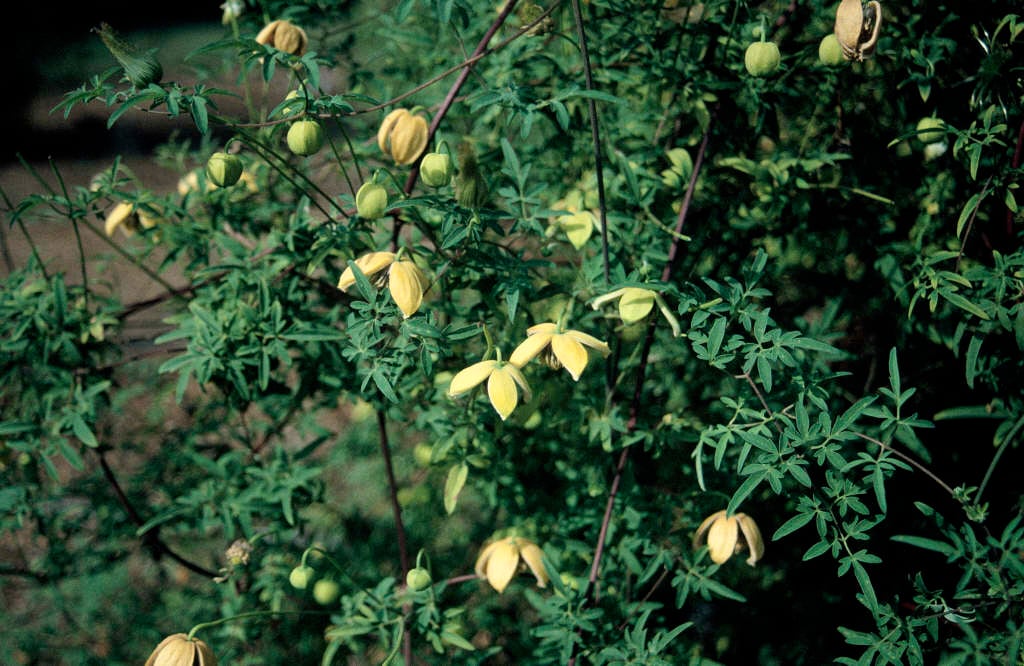Clematis tibetana subsp. vernayi
Chinese clematis
A large, strong-growing deciduous climber with glaucous-green foliage. Single nodding greenish-yellow flowers sometimes orange in colour, with thick sepals and dark reddish-brown stamens flowering midsummer to early autumn. Prominent silky seed-heads after flowering

Size
Ultimate height
4–8 metresTime to ultimate height
2–5 yearsUltimate spread
1.5–2.5 metresGrowing conditions
Moisture
Moist but well–drainedpH
Alkaline, NeutralColour & scent
| Stem | Flower | Foliage | Fruit | |
| Spring | Blue Green | |||
|---|---|---|---|---|
| Summer | Yellow | Blue Green | ||
| Autumn | Yellow | Blue Green | Grey Silver | |
| Winter | Grey Silver |
Position
- Full sun
- Partial shade
Aspect
North–facing or South–facing or West–facing or East–facing
Exposure
Exposed or Sheltered Hardiness
H5Botanical details
- Family
- Ranunculaceae
- Native to GB / Ireland
- No
- Foliage
- Deciduous
- Habit
- Climbing
- Potentially harmful
- Skin irritant. Wear gloves and other protective equipment when handling. Pets (rabbits): Harmful if eaten. For further information and contact numbers regarding pets, see the HTA guide to potentially harmful plants
- Genus
Clematis can be deciduous or evergreen shrubs or herbaceous perennials, mostly climbing by twining leaf-stalks, and often with showy flowers. Some have attractive fluffy seedheads in autumn
- Name status
Correct
- Plant range
- S Europe to C Asia
How to grow
Cultivation
Plant in a moisture-retentive, well-drained soil, with the roots and base of the plant kept cool and shaded by other plants or a layer of pebbles at the base. Plant with the crown 5-8cm (2-3in) deep to encourage new shoots to grow from below ground level. See clematis cultivation
Propagation
Propagate by layering or semi-hardwood cuttings
Suggested planting locations and garden types
- Wall side borders
- Climber and wall shrubs
Pruning
Pests
May be susceptible to aphids, snails and caterpillars; petals may be eaten by earwigs
Diseases
May be susceptible to honey fungus (rarely), clematis wilt and clematis slime flux
Get involved
The Royal Horticultural Society is the UK’s leading gardening charity. We aim to enrich everyone’s life through plants, and make the UK a greener and more beautiful place.